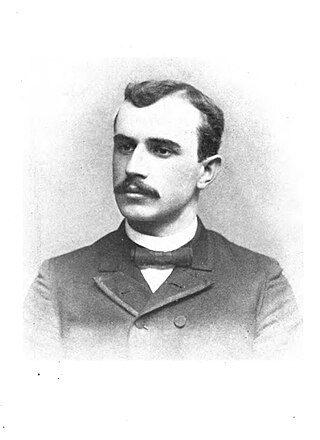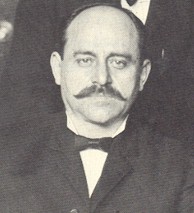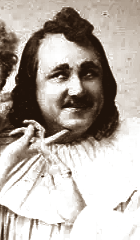
Heinrich Schenker was a Galician-born Austrian music theorist whose writings have had a profound influence on subsequent musical analysis. His approach, now termed Schenkerian analysis, was most fully explained in a three-volume series, Neue musikalische Theorien und Phantasien, which included Harmony (1906), Counterpoint, and Free Composition (1935).

Karl Theodore Francis Bitter was an Austrian-born American sculptor best known for his architectural sculpture, memorials and residential work.

The Pennsylvania Company, later known publicly as the Pennsylvania Lines was a major holding company. It included the Pittsburgh, Fort Wayne and Chicago Railway, the PRR's main route to Chicago. It also owned but did not operate the Pittsburgh, Cincinnati, Chicago and St. Louis Railroad, another line to Chicago. It merged back into the Pennsylvania Railroad in 1918.
The Interstate League was the name of five different American minor baseball leagues that played intermittently from 1896 through 1952.

Georg Marco was an Austrian chess player.

Martin Krause was a German concert pianist, piano teacher, music critic, and writer.

Roland Forrest Seitz (1867–1946) was an American composer, bandmaster, and music publisher. For his many march compositions he earned the sobriquet “The Parade Music Prince”.

Asahel Wellington Jones was an American Republican politician who served as the 24th lieutenant governor of Ohio from 1896 to 1900.

Harry Lincoln Gordon was an American politician who served as the 27th lieutenant governor of Ohio from 1902 to 1904.

Johann Otto Hoch is the most famous and last-used alias of a German-born murderer and bigamist, John Schmidt. He was found guilty of the murder of one wife but is thought to have killed more, perhaps up to 50 victims. He was hanged.

William Paris Chambers was an American composer, cornet soloist, and bandmaster of the late 19th century.

Charles Henry Owsley (1846–1935) was an English-born American architect in practice in Youngstown, Ohio, from 1872 until 1912.

The Gottbegnadeten-Liste was a 36-page list of artists considered crucial to National Socialist culture. The list was assembled in September 1944 by Joseph Goebbels, the head of the Ministry of Public Enlightenment and Propaganda, and Germany's supreme leader Adolf Hitler.

Arlington G. Reynolds was a Republican politician in the U.S. state of Ohio who was Speaker of the Ohio House of Representatives 1900–1901.
Robert Ayres Barnet was an American musical theatre lyricist from New York City, active in New York and Boston in the late 19th and early 20th centuries. He is most remembered for his collaborations with the Boston Men's Army Cadets.

The Cleveland and Mahoning Valley Railroad (C&MV) was a shortline railroad operating in the state of Ohio in the United States. Originally known as the Cleveland and Mahoning Railroad (C&M), it was chartered in 1848. Construction of the line began in 1853 and was completed in 1857. After an 1872 merger with two small railroads, the corporate name was changed to "Cleveland and Mahoning Valley Railroad". The railroad leased itself to the Atlantic and Great Western Railway in 1863. The C&MV suffered financial instability, and in 1880 its stock was sold to a company based in London in the United Kingdom. A series of leases and ownership changes left the C&MV in the hands of the Erie Railroad in 1896. The CM&V's corporate identity ended in 1942 after the Erie Railroad completed purchasing the railroad's outstanding stock from the British investors.

Harry Monkhouse was the stage name of John Adolph McKie, a comic actor and singer. He appeared in the British provinces, the West End and featured in a round the world tour of A Gaiety Girl in 1893 to 1895.














